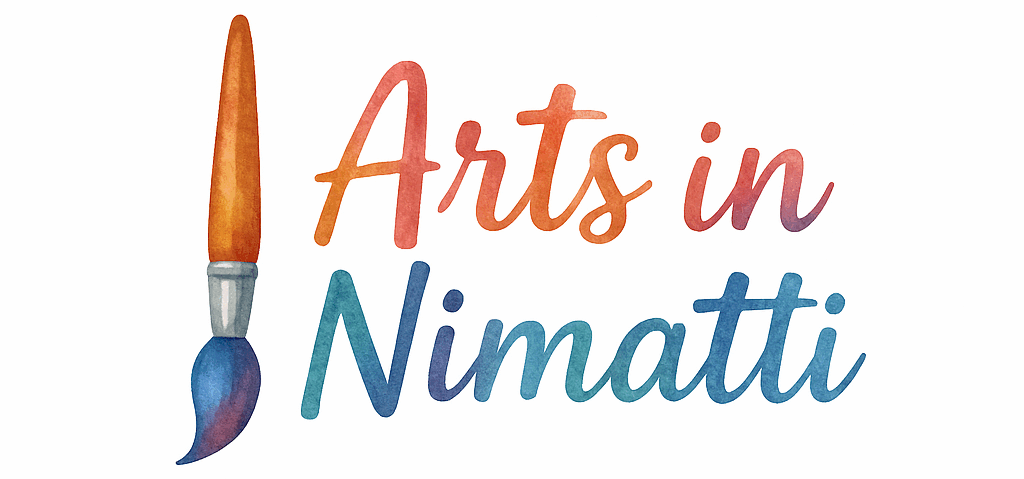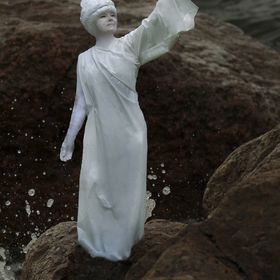Introduction
If you’re a parent, teacher, or guardian looking to nurture creativity in kids, art projects are a fantastic way to go about it. Not only do they offer hours of entertainment, but they also encourage children to use their imaginations, solve problems, and express themselves. The best part? You don’t need fancy, expensive supplies to create something amazing. By using simple, basic art supplies, you can create a variety of fun, engaging projects that will keep kids entertained for hours.
In this article, we’ll explore six easy art projects that kids can do using basic art supplies you likely already have at home. Whether you’re looking for activities to add to an art class or simply seeking to spend quality time with your little ones, these ideas are perfect for fostering creativity and developing essential skills. So, let’s dive into these easy-to-follow projects!
1. DIY Painted Rocks
Supplies Needed:
- Rocks (preferably smooth and flat)
- Acrylic paints or markers
- Paintbrushes
- Palette or disposable plates for mixing
- Paper towels for cleaning
Step-by-Step Instructions:
- Start by collecting a few smooth rocks from your yard or local park. Clean them thoroughly with soap and water to remove dirt and debris.
- Set up your painting station with acrylic paints, brushes, and a workspace that can get messy.
- Encourage your child to think of a design—anything from simple patterns to animals or even inspirational words.
- Paint the rocks, allowing each layer to dry before adding more details. You can even add a clear coat of varnish for durability once the paint dries.
- Once the rocks are painted, they can be displayed as home décor, used as paperweights, or hidden around your neighborhood as part of a fun scavenger hunt.
Creative Ideas for Painting Rocks:
- Animals like ladybugs, turtles, or snakes.
- Inspirational quotes or motivational words.
- Abstract patterns or geometric shapes.
This project is simple and fun, and it offers endless opportunities for creativity. Plus, it’s a great way to teach kids about the importance of patience as they wait for the paint to dry.
2. Paper Plate Animals
Supplies Needed:
- Paper plates
- Markers, crayons, or paint
- Glue
- Scissors
- Construction paper (optional)
- Googly eyes (optional)
Step-by-Step Instructions:
- Start by giving your child a paper plate to use as the base for their animal. The round shape is perfect for creating the face of animals.
- Have them choose an animal to create, like a lion, owl, or bear.
- Use construction paper to cut out animal features—ears, noses, whiskers, and paws.
- Color the rest of the plate to resemble the animal’s body. For example, for a lion, you can paint the outer edges of the plate yellow or orange, and the inner part of the plate can be painted a lighter shade to represent the lion’s face.
- Glue on the animal’s features and add googly eyes for an extra fun touch.
- Once the glue dries, the kids can proudly display their paper plate animals!
Ideas for Different Animals:
- A bear with big round ears.
- An owl with feathery details.
- A frog with a long, curly tongue.
This project helps kids develop fine motor skills and gives them the chance to think creatively about the world of animals. It also ties in nicely with art education by introducing kids to the concept of using simple shapes to create more complex images.

3. Handprint Art
Supplies Needed:
- Paint (washable acrylic paint works best)
- Paper (construction paper works well)
- Paintbrush or sponges
- Paper towels or wet wipes for cleanup
Step-by-Step Instructions:
- Begin by applying a thin layer of paint to your child’s hands. You can use a paintbrush to coat their hands evenly.
- Help them press their painted hands onto a piece of construction paper to make a print. You can make multiple prints to form designs like trees, animals, or flowers.
- Once the handprints are dry, you can add extra details like eyes, ears, or leaves to create a complete scene or character.
- Handprint art can be as simple or as detailed as you like, so encourage your child to experiment with different colors and shapes.
How to Create Different Handprint Designs:
- A handprint tree with branches made from painted handprints.
- A handprint fish with painted scales.
- A handprint butterfly by making two prints and connecting them.
Handprint art is a wonderful way for kids to create something that’s both personal and meaningful. It’s a keepsake that parents cherish for years, while also fostering creativity and self-expression. Plus, it’s an excellent introduction to art techniques.
4. Collage Art
Supplies Needed:
- Old magazines, newspapers, or colored paper
- Glue or glue sticks
- Scissors
- Construction paper (for the base)
Step-by-Step Instructions:
- Give your child a piece of construction paper as the base for their collage.
- Let them cut out images or colorful paper from old magazines or newspapers. This could include pictures of animals, nature, people, or abstract shapes.
- Encourage your child to arrange the cut-outs into a collage, which can be random or thematic (like a jungle scene or underwater world).
- Once the images are arranged, glue them down.
- After the collage is dry, you can frame it as a fun piece of art portfolio or use it to decorate the home.
Tips for Making a Creative Collage:
- Incorporate texture by adding fabric, buttons, or fabric scraps.
- Focus on a theme like nature, the environment, or the child’s favorite hobbies.
Collage art encourages kids to experiment with textures, colors, and themes, helping them grow their creativity and problem-solving skills.
5. Popsicle Stick Picture Frames
Supplies Needed:
- Popsicle sticks
- Glue
- Paint
- Decorative items (buttons, glitter, beads, etc.)
- Photos or artwork to frame
Step-by-Step Instructions:
- Begin by arranging four popsicle sticks to form a square or rectangle to serve as the picture frame.
- Glue the sticks together at the corners and allow them to dry completely.
- Once the frame is assembled, your child can decorate it with paint, glitter, or other embellishments like beads or buttons.
- Once the frame is dry, add a photo or piece of artwork to the back and display it proudly!
Fun Variations of Picture Frames:
- Decorate the frame to match a specific season or holiday.
- Add a special message or quote to the frame.
This simple craft allows children to use basic art supplies to create a personalized, functional item. It’s a great project for kids to give as gifts to family and friends, combining creativity with thoughtfulness.
6. Nature Art with Leaves and Flowers
Supplies Needed:
- Leaves, flowers, or other natural materials
- Construction paper
- Glue or mod podge
- Scissors
Step-by-Step Instructions:
- Take a nature walk with your child to gather various leaves, flowers, and other natural items like pinecones or seeds.
- Once you’ve gathered your materials, choose a base like a piece of construction paper or cardboard.
- Have your child arrange the leaves, flowers, or natural items into a creative design on the paper.
- Glue down the items, and add details like drawn insects or animals.
- For a more permanent piece of nature art, you can apply mod podge to preserve the natural materials.
Exploring Nature through Art:
- Create a leaf collage to represent a tree.
- Make flower petals into a butterfly design.
This project not only connects children to nature but also helps them develop an appreciation for the environment while learning about different textures and colors.
Benefits of Creating Art with Kids
Creating art with kids isn’t just about fun; it’s a gateway to numerous developmental benefits. Art fosters emotional and cognitive growth, helping kids express their feelings and develop problem-solving skills. Furthermore, engaging in artistic activities builds fine motor skills, increases attention span, and even improves focus. As kids work with their hands and develop their imagination, they strengthen cognitive functions, paving the way for academic success.
The shared experience of creating art with a parent or caregiver also helps build stronger bonds, which is essential for healthy emotional development.
Conclusion
Art projects for kids are a wonderful way to introduce them to the world of creativity while using simple materials you already have at home. Whether you’re making DIY painted rocks, paper plate animals, or nature art, these activities provide a fun way for children to express themselves, develop new skills, and have fun with their creativity.
If you’re looking to dive deeper into the world of art, art education and art techniques offer plenty of valuable resources to nurture your child’s talents further.
FAQs
- What Are Some Easy Art Projects for Beginners? Simple projects like handprint art, paper plate animals, and painted rocks are perfect for beginners.
- How Can Art Help Kids Develop Skills? Art encourages creativity, fine motor skills, problem-solving, and emotional expression.
- Can I Do These Projects with a Group of Kids? Yes! These projects are ideal for group settings like classrooms or birthday parties.
- What Are Some Tips for Keeping Kids Engaged in Art Projects? Encourage creativity, offer a variety of materials, and keep projects fun and open-ended.
- Are These Projects Safe for Young Children? Yes, all projects can be adapted to be safe for younger children, with supervision for cutting and using certain materials.
- How Can I Turn Art Projects into Learning Experiences? You can tie in lessons about shapes, colors, animals, or nature while doing the projects to add an educational element.
- What Basic Supplies Do I Need to Get Started? Basic art supplies like paper, paint, glue, scissors, markers, and brushes are all you need to get started.

